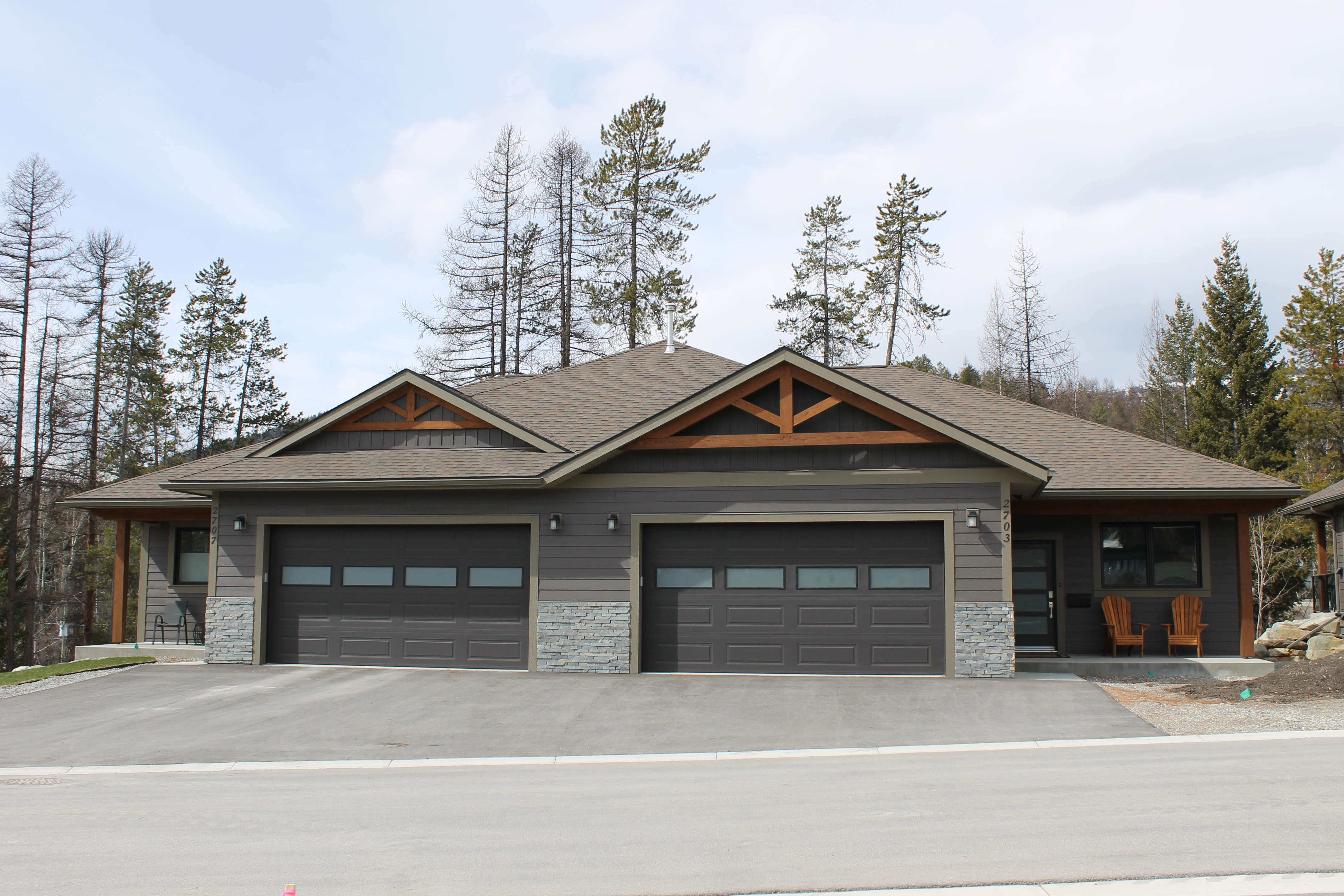FortisBC and Tyee Homes achieve net-zero ready with high-efficiency gas equipment
Dec 6, 2022
Builders from across B.C. are achieving high levels of Energy Step Code with help from FortisBC programs
Surrey, B.C.—December 6, 2022: An award-winning home builder, Tyee Homes, has set a new bar for energy efficiency in residential construction, completing a new development with a home that reached the highest level of the B.C. Energy Step Code. The home, located within a seven-unit duplex development in Kimberley, B.C., achieved Step 5, of the Energy Step Code by incorporating passive solar design, a high level of airtightness and high-efficiency natural gas combination space and water heating system. Information from a case study of this home, as well as similar case studies from across the province, will help inform how new homes can reach the higher step codes and help advance climate action goals.
“The Kimberley project will really help move us forward in understanding the best approaches for energy-efficient residential construction, especially given its location in one of B.C.’s colder regions,” said Tanya Rumak, program manager, conservation and energy management at FortisBC. “Continuing to improve the energy efficiency of new construction, along with the work we are doing to decarbonize the gas system, means that our customers have more options available in how to achieve climate reduction goals.”
Traditionally a custom home builder, this was one of Tyee Homes’ first builder development projects. With 18 years of experience building in the Kootenays, they’re interested in finding the most practical and cost-effective ways to meet the highest level of the Step Code. They got involved in the study by working closely with an energy advisor to incorporate passive solar design and a high-level of airtightness.
“We’re extremely passionate about providing quality energy-efficient homes for our customers,” said Carl Lauren, owner of Tyee Homes. “Many of our customers are looking for homes that are more environmentally friendly and less expensive to operate. They enjoy the comfort of natural gas for space and water heating, and like that the equipment can be used with renewable energy sources to help reduce greenhouse gas emissions.”
Tyee Homes focused on the building envelope first, using off-the-shelf products such as SIGA building wrap and tape to ensure high-levels of airtightness. To maximize results, they thoroughly inspect the air sealing before it is covered with rigid insulation and cladding. By using this approach, they achieved air tightness levels of approximately 0.7 air changes per hour, with the equivalent leakage area of approximately 5.2 inches by 5.2 inches, which is approximately the size of a half sheet of letter-sized paper. The leakage area can be compared to a window that is left open at all times–the smaller the area, the less heat will escape from the home. For comparison, the equivalent leakage area in a typical Step 3 home is approximately 12.5 inches by 12.5 inches.
In addition to incorporating combination boilers for space and water heating, the home features in-floor radiant heating on both levels – a standard for all Tyee Homes due to its high energy efficiency, ease of use and improved comfort. Moving forward, Tyee Homes plan to continue to work with an energy advisor to see what design modifications can be made to meet Step 5 in all of their units.
Through the combined efforts of passive solar design, improved building envelope and high-efficiency mechanical systems, the completed home was found to be 37 per cent more efficient than a typical new home. The home also achieved significant energy savings, using roughly a third of the gas of the average B.C. home annually. For homeowners looking to further decarbonize their home, Renewable Natural Gas1 is a low-carbon option that can be used with existing natural gas equipment.
FortisBC has long supported builders through financial incentives, mainly through its New Home Program. It’s continued to evolve the program to prepare builders to meet and exceed the B.C. Building Code requirements. In addition to working with Tyee Homes, FortisBC completed six additional studies with builders in Campbell River, Quesnel, Maple Ridge and North Vancouver. Working together with builders has helped create a better understanding of the tactics needed to reduce the total energy requirements of new homes across different regions of the province.
The provincial government is targeting that by 2032, all new Part 9 residential buildings will achieve Step 5 and meet net-zero energy ready requirements. Read the full case studies to see how FortisBC is helping home builders achieve Step 5.

Tyee Home’s duplex development in Kimberley, B.C. is built to Step 5 of the Energy Step Code. Photo credits: Chris Pullen Photography.
1 Renewable Natural Gas is produced in a different manner than conventional natural gas. It is derived from biogas, which is produced from decomposing organic waste from landfills, agricultural waste and wastewater from treatment facilities. The biogas is captured and cleaned to create Renewable Natural Gas (also called biomethane).
Media contact
Holly Harrison
Corporate Communications Specialist
FortisBC
Phone: 604-209-8031
Email: holly.harrison@fortisbc.com
fortisbc.com
@fortisBC
24-hour media line: 1-855-FBC-NEWS or 1-855-322-6397
FortisBC Energy Inc. is a regulated utility focused on providing safe and reliable energy, including natural gas, Renewable Natural Gas and propane. FortisBC Energy Inc. employs around 2,078 British Columbians and serves approximately 1,064,800 customers across British Columbia. FortisBC Energy Inc. owns and operates approximately 50,493 kilometres of gas transmission and distribution pipelines. FortisBC Energy Inc. is a subsidiary of Fortis Inc., a leader in the North American regulated electric and gas utility industry. FortisBC Energy Inc. uses the FortisBC name and logo under license from Fortis Inc. For further information on FortisBC, visit www.fortisbc.com. For further information on Fortis Inc., visit www.fortisinc.com.